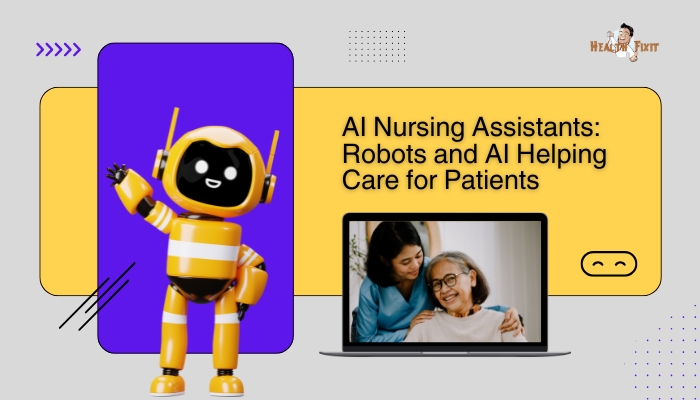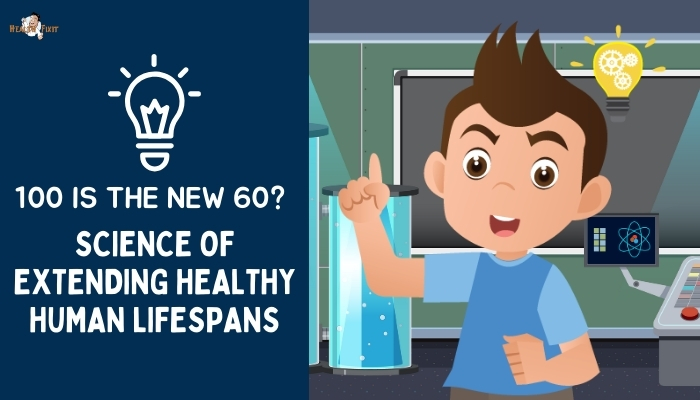Introduction
Nurses stand at the frontline of patient care, juggling tasks from routine vitals checks to emotional support.
Artificial intelligence (AI) assistants and robotic aides promise to ease the workload, keep an extra eye on patients,
and deliver greater efficiency in busy wards. While machines will never fully replace the empathy and expertise of human nurses
, these high-tech helpers can complement care teams—monitoring patient vitals, automating routine tasks, and alerting staff to urgent changes.
This article delves into the latest AI solutions for nursing support, their benefits and drawbacks, and how healthcare might evolve as technology shares the caregiving load.
The Rise of AI in Healthcare
Why AI Nursing Assistants?
- Staff Shortages: Many regions face nurse shortages, with staff stretched thin. AI can lighten their load, letting them focus on complex or human-centric tasks.
- Efficiency Gains: Robots or chatbots can handle repetitive tasks—like retrieving supplies, setting up equipment, or charting. Automated monitoring can prevent oversight.
- Better Outcomes: Quick, AI-driven alerts on vitals or medication issues can catch early warning signs of deterioration, improving patient safety and outcomes.
Components of an AI Helper
Nursing assistant AI might include:
- Robotic Platforms: Physical units that ferry supplies, guide patients, or help with mobility.
- Smart Software: Apps or dashboards that interpret patient data, flag anomalies, or automate documentation.
- Conversational Interfaces: Chatbots or voice assistants able to triage patient questions or coordinate tasks with staff.
Robotic Helpers in the Ward
Delivery and Logistics Robots
Some hospitals use robots to transport lab samples, deliver meals, or restock rooms with linens. Freed from menial chores, nurses can concentrate on direct patient care.
These robots navigate hallways using sensors or pre-programmed routes, often with friendly “faces” to reassure patients.
Patient Mobility and Rehab Assistance
Robotic arms or exoskeleton-like systems might help nurses lift or reposition patients, reducing musculoskeletal injuries among staff. They also can guide patients through rehab exercises under remote supervision, demonstrating proper movement patterns.
Infectious Disease Support
During outbreaks or pandemics, robots can reduce staff exposure by handling routine tasks in quarantine zones—delivering meds, collecting waste, or even performing basic vitals checks via integrated sensors.
AI Software for Nursing Workflows
Continuous Patient Monitoring
Wearable devices or in-room sensors feed real-time vitals (heart rate, oxygen saturation, temperature) into AI algorithms. If readings deviate from norms, the system pings the nurse station or sends smartphone alerts. This approach ensures earlier intervention, especially in step-down units or post-surgery wards.
Automated Charting and Documentation
Nurses spend considerable time inputting data. AI-based speech recognition or smart forms can auto-populate charts based on voice commands or sensor data, cutting down manual data entry. Freed from administrative burdens, nurses have more face-to-face patient care.
Chatbots for Triage and Education
In some pilot programs, chatbots respond to routine patient questions—like medication schedules—so nurses handle only more complex inquiries. Similar bots integrated with hospital EHRs might triage requests or schedule tasks, streamlining workflow coordination.
Benefits for Patients and Nurses
Reduced Errors
Automation can catch potential medication mismatches or highlight abnormal vitals. AI’s consistent vigilance complements human oversight, mitigating fatigue-related mistakes and alarm fatigue in busy wards.
More Human Interaction
With robots handling deliveries or menial tasks, nurses gain time to connect with patients—offering emotional support, thorough explanations of care, or focusing on advanced clinical interventions.
Personalized Care
AI analytics might tailor care schedules—like medication times or therapy sessions—based on individual patient data (sleep patterns, pain reports). This approach fosters patient-centered care, improving satisfaction and outcomes.
Challenges and Concerns
Technical Reliability
Glitches in robotics or sensor misreadings could lead to errors or frustrations for staff who must constantly calibrate or fix devices. Stable infrastructure and backup systems are essential to maintain trust in AI.
Privacy and Data Security
Health data is highly sensitive. AI systems collecting real-time vitals or storing patient interactions must meet strict HIPAA or GDPR standards. Unauthorized access could jeopardize confidentiality or hamper patient trust.
Staff Training and Acceptance
Nurses might fear tech overshadowing their roles, or be uncomfortable with adopting advanced robots. Comprehensive training and inclusive approach to design can ease concerns, highlighting that AI is an assistant, not a replacement.
The Future of AI Nursing Assistants
Advanced Robotics for Complex Tasks
As manipulation and AI vision improve, future nurse robots could handle advanced tasks like IV line changes or even minor procedures under nurse supervision. That scenario, while still somewhat speculative, is a goal for some robotics labs.
Integrated Care Platforms
In the big picture, AI nursing assistants might coordinate with telehealth doctors, pharmacists, or specialists to form a continuous circle of care. Patients at home could receive drone-delivered supplies, while wearable data is monitored by an AI nurse avatar 24/7.
Ethical and Regulatory Evolution
As AI decisions in patient care expand, new guidelines or liability frameworks will arise. Defining accountability—whether with developers, hospitals, or the AI itself—remains uncharted territory. Ongoing dialogue among policy makers, healthcare staff, and the public is vital.
Practical Guidance for Healthcare Organizations
- Pilot Gradually: Start with simpler tasks (robot deliveries, vitals monitoring) to gather user feedback.
- Empower Staff: Offer thorough training so nurses see AI as a collaborator, not a threat. Incorporate nurse input during design.
- Set Clear Policies: Identify responsibilities, escalate protocols, and fallback procedures if AI fails or data anomalies arise.
- Evaluate ROI: Weigh upfront investment (equipment, training) against time saved, improved patient satisfaction, and potential error reduction over time.
Conclusion
AI nursing assistants—ranging from corridor-roaming supply robots to advanced software that monitors patients—represent a powerful frontier in healthcare.
By offloading repetitive tasks, augmenting vigilance, and personalizing care, these systems could significantly enhance nurse workflows and patient experiences.
Yet the path forward requires balancing technological ambition with safety, ensuring privacy, reliability, and acceptance from the healthcare community.
Over time, as robots and AI become more sophisticated and seamlessly integrated, we might witness a transformation in how frontline nursing care is delivered—freeing nurses to focus on the compassionate, high-level interactions that define quality patient care.
References
- Locsin RC. Technological Competency as Caring in Nursing: A Model for Practice. Sigma Theta Tau International; 2016.
- Aiken LH, et al. Nurse staffing and education and hospital mortality in nine European countries. Lancet. 2014;383(9931):1824–1830.
- Fagertun J, et al. AI for nursing support: bridging tasks and trust. Nurs Adm Q. 2021;45(3):275–282.
- Broome M, Meehan C. AI-driven hospital robots: a scoping review of design and outcomes. J Nurs Adm. 2020;50(11):592–599.
- Curran SF. Ethical considerations for AI in nursing. J Clin Ethics. 2021;32(1):58–65.
- Kiyancicek N, Dorsher J. The potential of robotics in nurse-led care. J Healthc Eng. 2021;2021:8861423.
- Delgado M, et al. Implementation strategies for telepresence robots in advanced nursing practice. J Telemed Telecare. 2022; Epub ahead of print.
- Emani S, et al. AI in healthcare: shaping the future of patient care. NEJM Catalyst. 2019; Online.
- Hwang T, Freed B. Data privacy and the AI nurse: a policy perspective. Healthc Policy. 2020;16(1):98–107.
- Brynolf M, et al. Clinical pilots of robot-aided nurse tasks: methodology and results. Stud Health Technol Inform. 2021;281:88–93.





